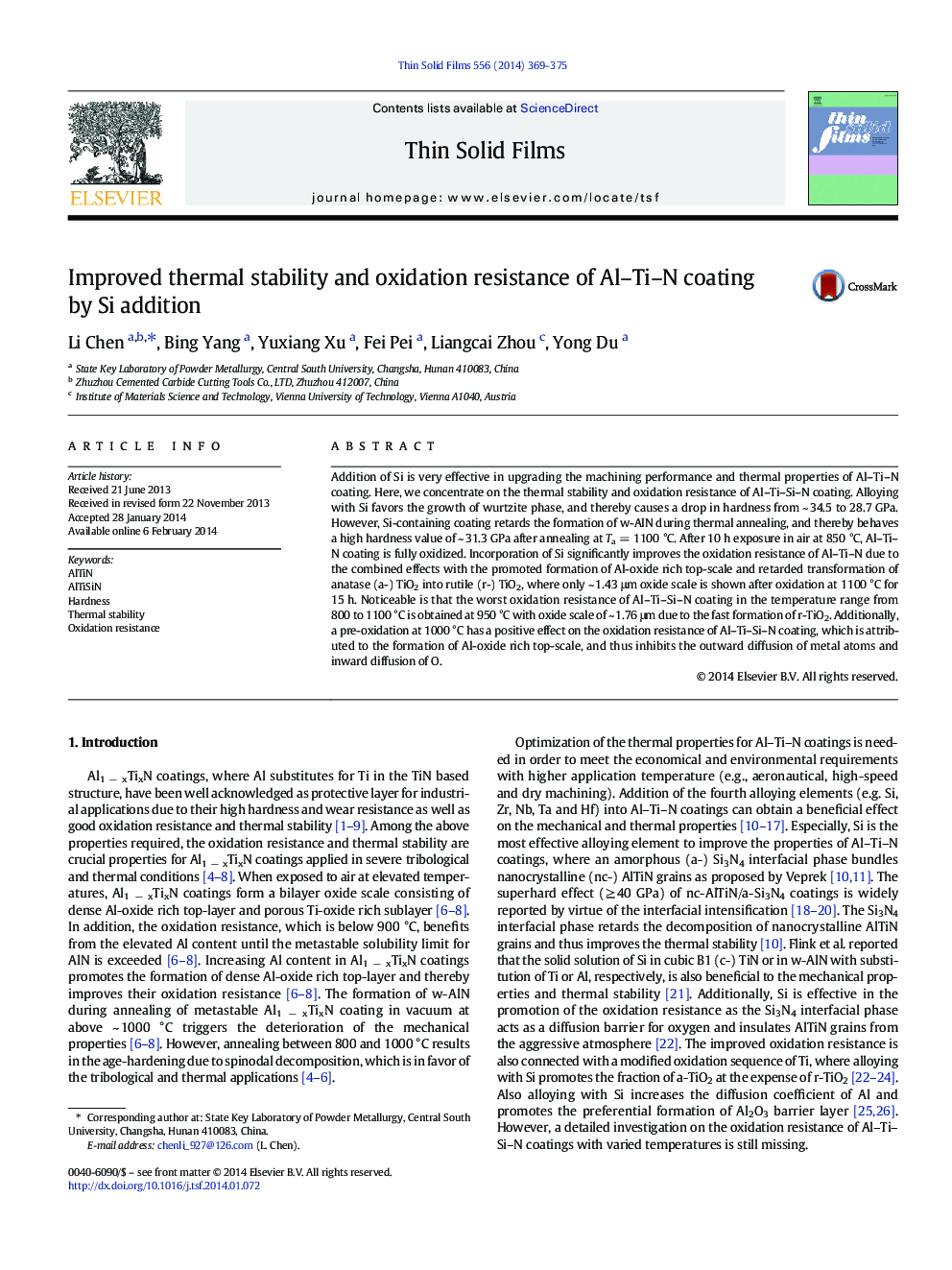| Article ID | Journal | Published Year | Pages | File Type |
|---|---|---|---|---|
| 8035222 | Thin Solid Films | 2014 | 7 Pages |
Abstract
Addition of Si is very effective in upgrading the machining performance and thermal properties of Al-Ti-N coating. Here, we concentrate on the thermal stability and oxidation resistance of Al-Ti-Si-N coating. Alloying with Si favors the growth of wurtzite phase, and thereby causes a drop in hardness from ~ 34.5 to 28.7 GPa. However, Si-containing coating retards the formation of w-AlN during thermal annealing, and thereby behaves a high hardness value of ~ 31.3 GPa after annealing at Ta = 1100 °C. After 10 h exposure in air at 850 °C, Al-Ti-N coating is fully oxidized. Incorporation of Si significantly improves the oxidation resistance of Al-Ti-N due to the combined effects with the promoted formation of Al-oxide rich top-scale and retarded transformation of anatase (a-) TiO2 into rutile (r-) TiO2, where only ~ 1.43 μm oxide scale is shown after oxidation at 1100 °C for 15 h. Noticeable is that the worst oxidation resistance of Al-Ti-Si-N coating in the temperature range from 800 to 1100 °C is obtained at 950 °C with oxide scale of ~ 1.76 μm due to the fast formation of r-TiO2. Additionally, a pre-oxidation at 1000 °C has a positive effect on the oxidation resistance of Al-Ti-Si-N coating, which is attributed to the formation of Al-oxide rich top-scale, and thus inhibits the outward diffusion of metal atoms and inward diffusion of O.
Related Topics
Physical Sciences and Engineering
Materials Science
Nanotechnology
Authors
Li Chen, Bing Yang, Yuxiang Xu, Fei Pei, Liangcai Zhou, Yong Du,
